Whether you want to restore your original engine color or change your engine paint, you will need to remove the old engine paint partially or completely. Although removing tough engine enamel is quite a challenging task, don't worry because we've done the research to help you do it properly.
Removing old engine enamel requires the same steps as a surface preparation prior to engine painting. You will need to clean and degrease the metal surface, apply a paint stripper, and use abrasive tools. Afterward, you also need to apply primer as soon as possible.
Are you planning to do a DIY painting project on your engine? Keep reading because we've prepared some helpful tips to make your engine detailing project a success.
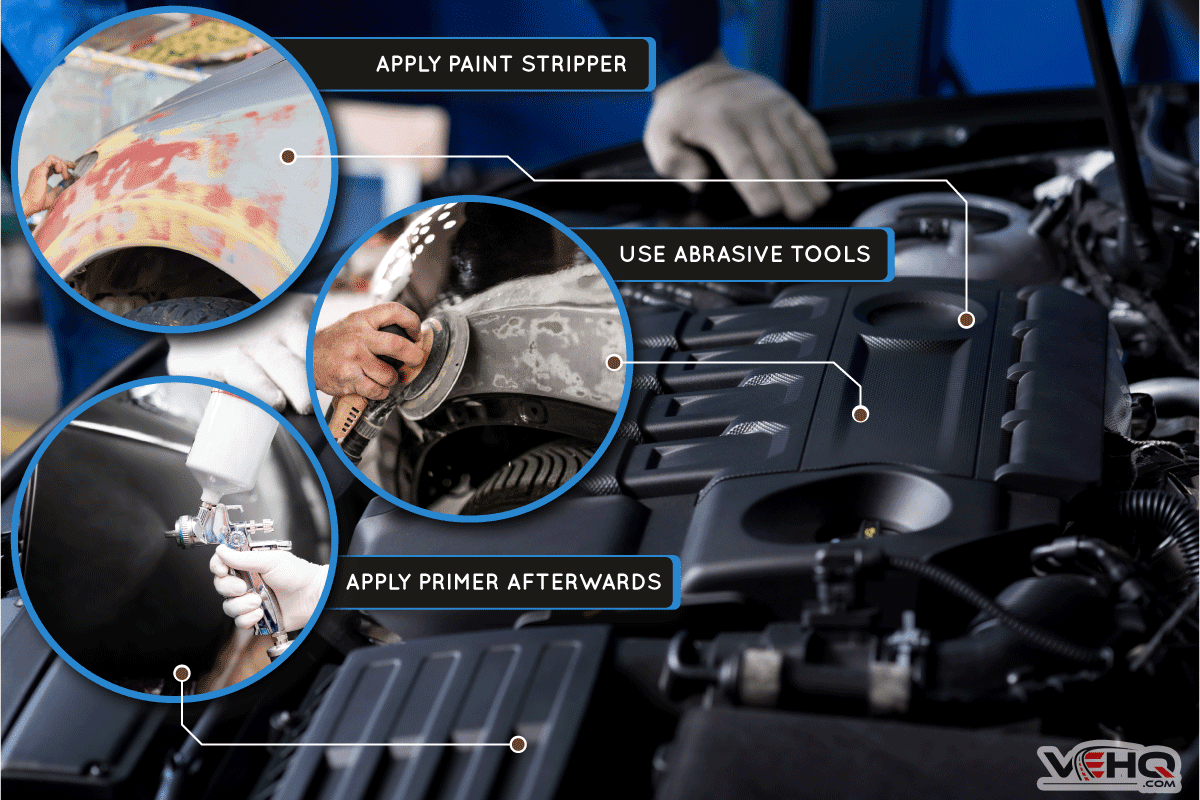
How Do I Remove Paint From My Engine?
Engine paint removal is usually done in preparation for a new coat of engine enamel. Although some weekend DIYers choose to paint only the highly-visible engine parts on top, many auto detailing enthusiasts like to take the whole engine block out of the car for a complete repaint.
Either way, paint removal requires adequate preparation and post-stripping processes to get the best results. You will need to clean the engine parts prior to stripping, and you will need to coat the stripped metal surface with engine primer afterward.
Surface Cleaning
Engine surfaces may accumulate dust, salt, rust, engine oil, and other engine bay by-products that may reduce the effectiveness of the chemicals that you will use for paint stripping and surface preparation.
Furthermore, surface contaminants may hide the true condition of the metal surface that you want to work on. Surface cleaning is the first step in any engine paint removal or repainting process.
If you want to work on specific engine parts (like the valve cover) only, then you need to remove that part for cleaning. More meticulous detailers, however, will want to pull out and disassemble the whole engine.
Once you've isolated the engine parts that you want to work on, you'll need to clean and degrease them. You may spray and wipe the surfaces with degreaser products, or you can build your own hot tank.
Once you've cleaned the metal surfaces, you should also remove any rust that may have been previously hidden by the dirt. Depending on the severity and location of the rust, you can use a power sander, a wire brush, or other abrasive tools.
You may notice that manual or powered abrasive tools can strip some of the paint away along with the rust. Although it is possible to remove engine enamel with these abrasives, it will take a lot of time and effort, especially for those hard-to-reach nooks and crannies.
So how do you make the job easier?
Paint Stripper
There are many common chemicals that can remove paint from surfaces, like isopropyl alcohol, brake fluid, epoxy, acetone, and lacquer thinner. However, engine enamel is very durable compared to many other types of paints, and these common solvents may not be strong enough for the job.
For the fastest paint stripping results, you can use auto paint removers or even aircraft finish removers.
Check out this popular aircraft paint remover on Amazon.
Metal paint strippers may come in gel or liquid aerosol form. Either way, make sure to use protective equipment like masks, gloves, and goggles when applying these chemicals. They emit harmful fumes and are very caustic on human skin.
Check out this video below on how you can use an auto paint remover for your engine:
As we saw in the video above, the poster used a brush-on auto paint remover on the cast-iron engine block. A few minutes after application, the engine enamel bubbled up and started peeling away from the metal. With a putty scraper or a small wire brush, you can help the process go even faster.
Here's another video demonstrating the effectiveness of aircraft finish removers in stripping away engine enamel:
On smoother metal surfaces like aluminum valve covers, we can see how easily the aircraft paint remover can lift the paint off the metal. Instead of wire brushes, the video poster used only his pressure washer to clean the lifted paint off the valve cover.
After stripping the paint of your engine part, make sure that you clean the surface well. You will need to remove any lifted paint, metal shavings, and paint stripper residue off the surface. Another round of degreasing should do the trick.
Check out this best-selling engine degreaser on Amazon.
Dry the engine surface completely using a cloth rag dipped in fast-evaporating acetone. For best results, some engine detailing experts use torches or even ovens.
Once the engine is dry, you need to apply engine enamel primer to prevent any flash rusting, especially on cast-iron surfaces. With all the protective paint layers gone, the bare metal is completely exposed to the elements.
What Paint Do You Use On Engines?
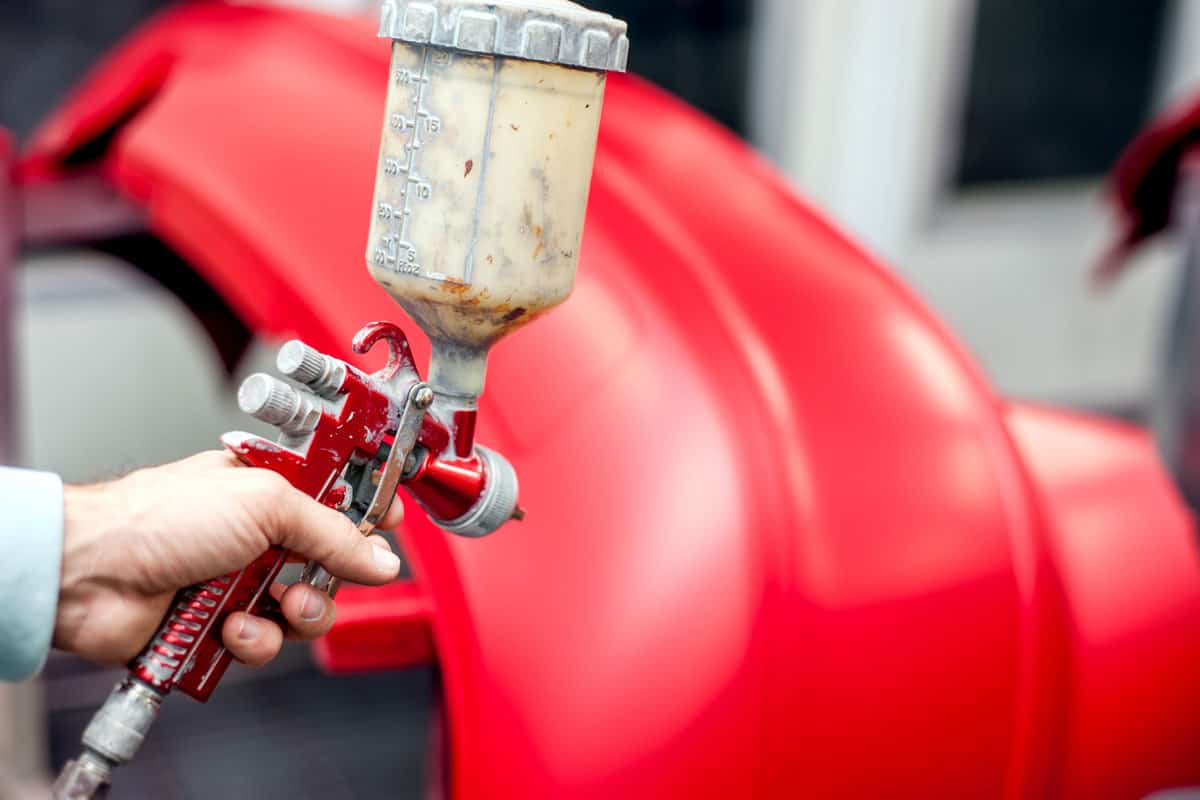
Modern car engines operate at temperatures between 167 and 221 degrees Fahrenheit. Aside from the internal combustion heat, turbochargers and other engine parts can raise the engine bay temperature up to 390 degrees Fahrenheit.
Due to the extreme operating conditions of the engine, not all types of metal paint will work on its surface. For instance, your standard car body polyurethane paint can only resist temperatures not more than 200 degrees Fahrenheit. You need high-temperature engine enamel if you want to paint your car's engine.
Many popular engine enamels can resist approximately 500 degrees Fahrenheit. Moreover, some special enamel products for automotive exhaust systems can withstand red-hot metal temperatures of up to 2,000 degrees Fahrenheit.
In terms of durability, many engine enamel products contain ceramic resins that give a tough and long-lasting color finish. In short, engine enamel will hold well under conditions that would chip, peel off, or evaporate other types of metal paint.
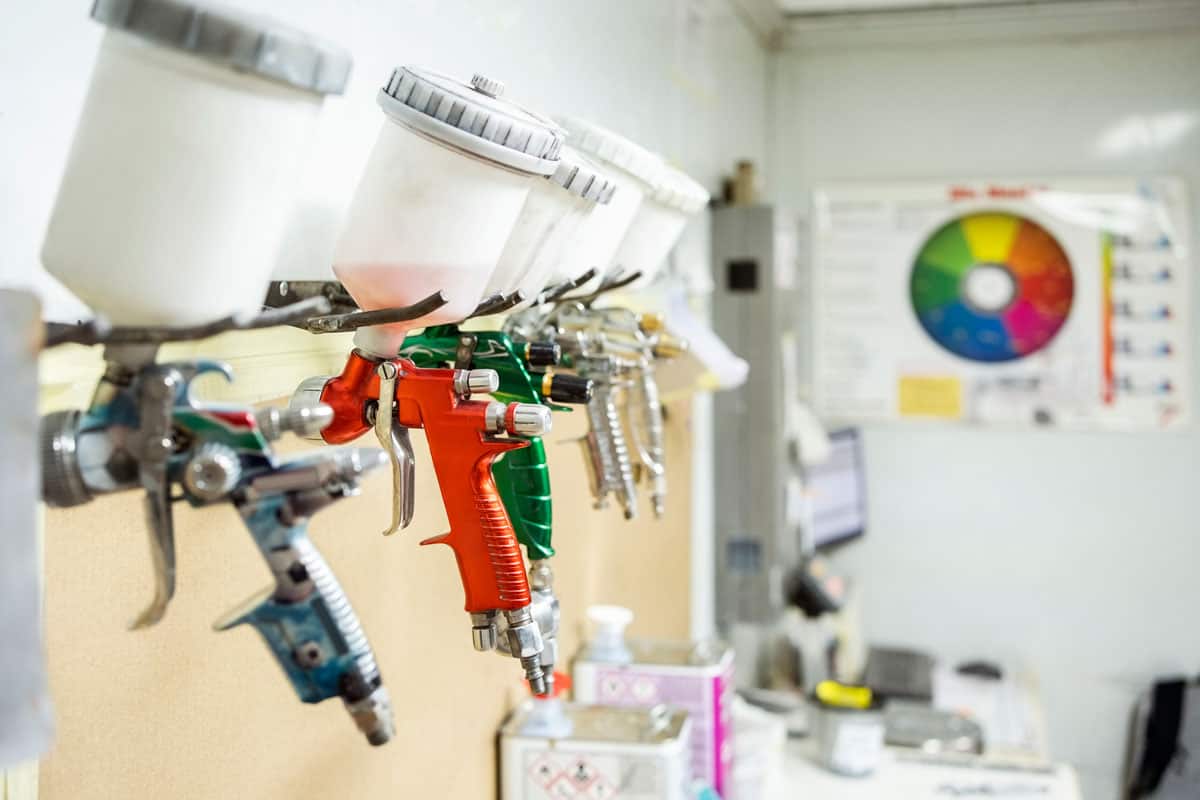
Should I Paint My Engine Block?
After all the work you've done in dismantling, cleaning, and paint stripping, you probably want to proceed to the most satisfying part, which is painting the engine surface. After all, a fresh coat of paint that complements your car's body color looks way better than the primer gray that you just applied.
Some car owners paint their engines for practical purposes like restoration and rust protection. However, many automotive enthusiasts paint and detail their engines for more aesthetic purposes, like car club meets and car show competitions.
Finally, some racing outfits paint engines to improve their performance. Based on studies, black paint can radiate heat at a faster rate than any other paint color. Following this logic, black engine enamel can help engines cool down faster, especially during races.
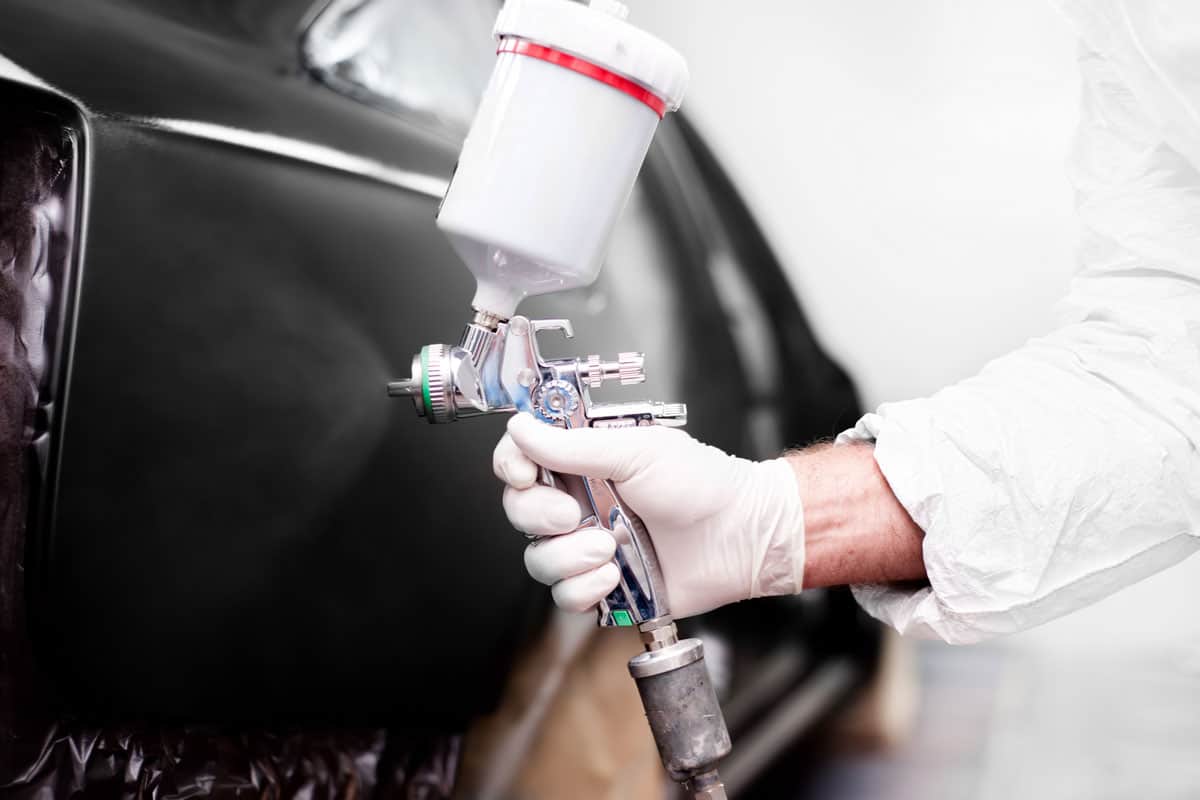
How Long Does Engine Enamel Take To Cure?
Earlier, we discussed that engine enamel is a very durable type of paint. However, for the engine enamel to achieve this level of durability, it needs to cure properly.
Curing is the process that paint undergoes to reach its maximum hardness. Technically speaking, paint is considered cured after its liquid pigments solidify and the paint compound achieves maximum hardness and bond strength.
Depending on the brand, engine enamel paint can take five to seven days to cure on its own as long as it is kept away from moisture and contaminants. However, there are some methods that can shorten the curing period significantly.
Convection Curing
Convection curing is the simplest way to speed up paint curing, as it only involves heat transfer via convection around the painted surface.
Some paint experts bake painted metals in large ovens after the painted surface becomes dry enough to handle. They recommend baking at a temperature of 200 degrees Fahrenheit for 20 minutes.
On the other hand, some auto detailing professionals also advise customers to use engine heat to speed up paint curing. Once you've reinstalled the painted engine parts back in the engine bay, you can start the vehicle up and let the engine run for 20 minutes.
UV Curing
Ultraviolet (UV) rays can speed up your engine enamel's curing time from days to hours. Of course, the curing period can change depending on the size of the painted area, the paint type, and the thickness of the coats.
As we saw from the video, UV rays do not use direct heat to speed up the curing process. However, UV rays can cause serious damage to your eyes. Always wear proper protective equipment if you will use a UV paint-curing product.
Check out the featured UV paint-curing device on Amazon.
Infrared Curing
Infrared curing, unlike UV curing, uses heat to speed up the paint-curing process. With the use of infrared heating lamps, your engine enamel's curing time can also drop to hours.
Electron Beam Curing
Electron beam (EB) curing is an industrial process that uses electron energy to shorten the paint curing period.
However, unlike UV and infrared technologies, EB paint curing is not as widely available to commercial users. For now, this technology is available only at industrial scales for high-performance coating projects.
Wrapping Up
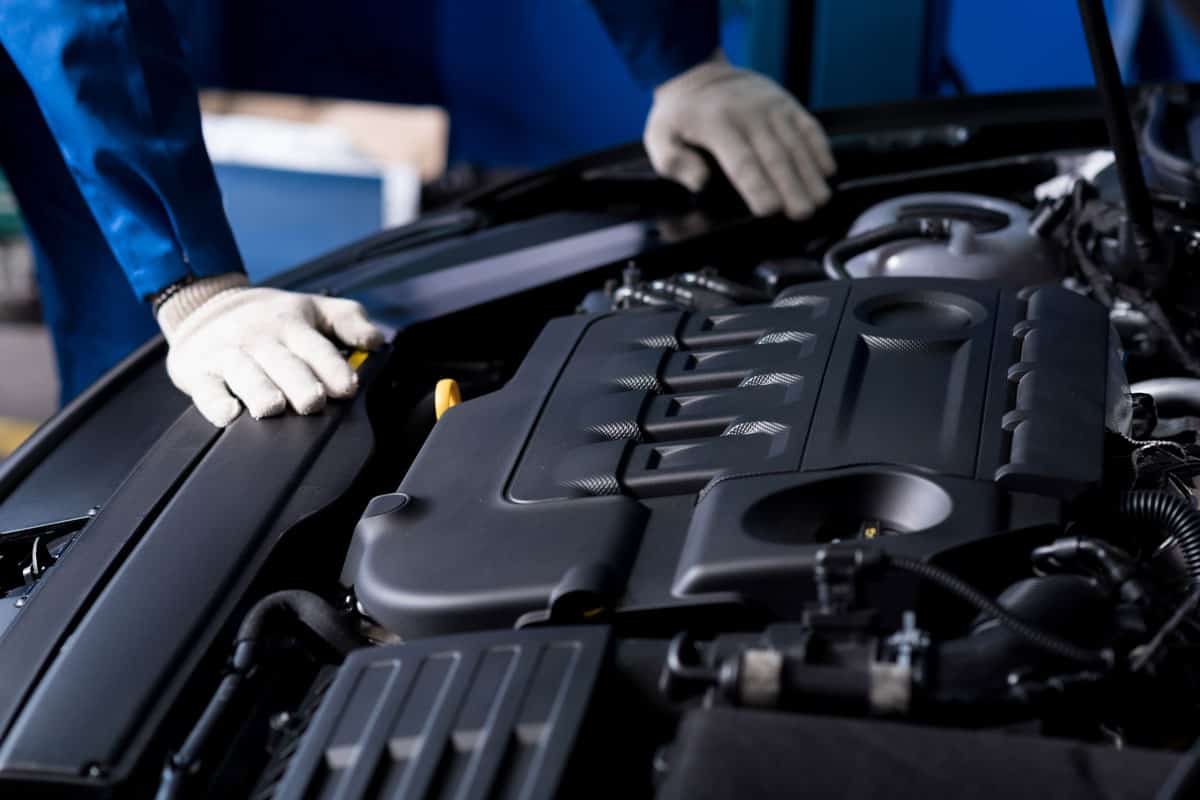
You may use manual or powered abrasive tools to sand or scrape off your engine's enamel paint. However, applying automotive or aircraft paint removers can make the job faster and easier.
Just make sure to clean and dry the surface well before and after stripping the paint, and apply engine enamel primer ASAP afterward.
Thank you very much for reading. We hope we were able to help you find the best way to remove your engine enamel in preparation for engine detailing or repainting.
For more interesting reads about car paints and other automotive topics, you may also check out these great articles below:
Buffing Vs Polishing A Car: What’s The Difference?



